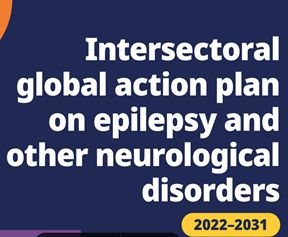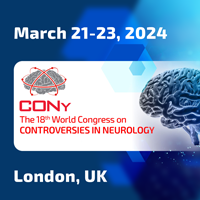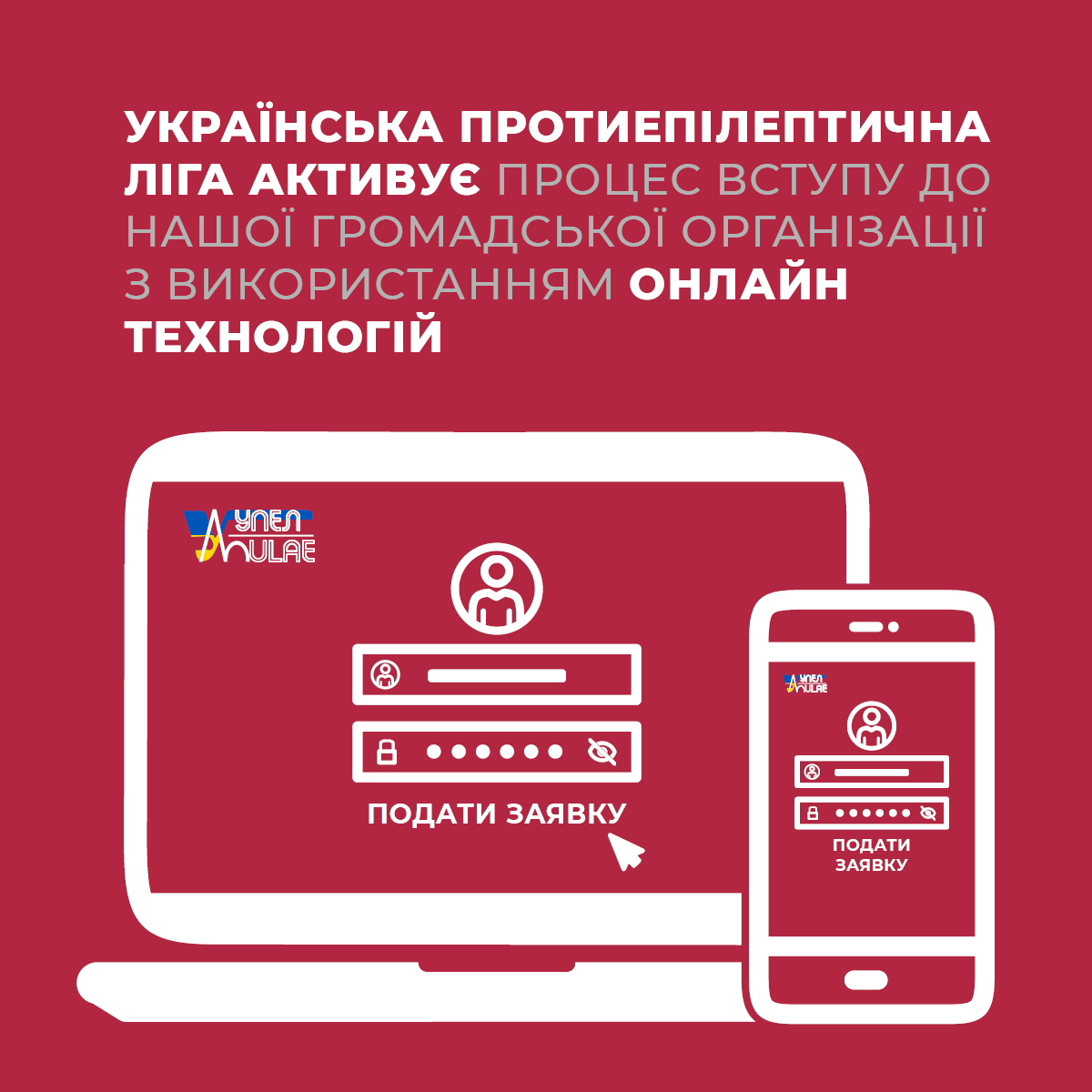Seizure 2020, Vol 76, Editor’s Choice: “Exploring epilepsy attendance at the emergency department and interventions which may reduce unnecessary attendances: A scoping review”
At a time when the world’s attention is focused on the response of emergency medical services to the Covid-19 pandemic my Editor’s Choice from the current volume of Seizure is a scoping review by Lisa Burrows et al, summarizing research exploring interventions aimed at reducing unnecessary emergency department (ED) attendances by individuals with epilepsy (1).
In England (population 53 million) a high-income country with a universal public health system providing free access to routine and emergency health care and antiseizure medicines only 50% of patients with epilepsy become free of seizures (2). Those individuals with uncontrolled epilepsy are not the only ones who are at risk of frequenting EDs with seizures. One study suggested that, although three quarters of patients of the patients brought to an ED with a suspected seizure diagnosis had experienced and epileptic seizure only about one third of patients carried a diagnosis of epilepsy at the time of their admission (3). However it has been estimated that epileptic seizures lead to 60,000 ED (113 per 100,000), and 40,000 hospital admissions in England per year (76-148 per 100,000), making epileptic seizures one of the three commonest neurological causes for attendance in emergency departments (EDs) (4).
This means that a substantial proportion of seizure-associated ED attendances are related to an “ambulatory care sensitive condition”, i.e. they occurred in a context in which optimal ambulatory care may have prevented the need for the involvement of emergency services. Most presentations to EDs turn out to be related to problems which could have been managed outside EDs (such as resolved seizures) (5). Given that ED management by non-seizure experts often adds little to longer term seizure control but is associated with considerable expenditure and a risk of iatrogenic complications (such as hospital acquired infection!), it is important to explore how ambulatory care could be improved to avoid unnecessary admissions.
The scoping review by Burrows et al. is therefore of great clinical importance. Their overview of recent research is based 29 pieces of original research which could be subdivided into four themes: care pathways, conducting care and treatment reviews, educational interventions and role of ambulance staff. Although there is clearly more work to do some of these intervention have been welcome by patients and associated with reduced healthcare expenditure.
While the identification of demographic and clinical risk factors for repeated attendance to EDs due to seizures has allowed interventions to be focused on the third of patients who are responsible for two thirds of all epilepsy related admissions (6), the nature of these factors (including mental health problems, low educational attainment and social problems) means that successful intervention will be particularly challenging. However, the urgent (and increasing) need to use limited healthcare resourced most effectively means that the search for better and more effective interventions improving the effectiveness of ambulatory care and reducing epilepsy-related demands on emergency services must continue.
References:
1) Burrows L, Lennard S, Hudson S, McLean B, Jadav M, Henley W, Sander JW, Shankar R. Exploring epilepsy attendance at the emergency department and interventions which may reduce unnecessary attendances: A scoping review. Seizure 2020; 76; 39-46
2) Dixon P, Kirkham J, Marson A, et al. National Audit of Seizure management in Hospitals (NASH): results of the national audit of epilepsy in the UK. BMJ Open 2015;5:e007325.
3) Dickson JM, Dudhill H, Shewan J, Mason S, Grunewald RA, Reuber M. Cross-sectional study of the hospital management of adult patients with a suspected seizure (EPIC2). BMJ Open. 2017;7(7),e015696. doi: 10.1136/bmjopen-2016-015696.
4) Dickson JM, Jacques R, Reuber M, Hick J, Campbell MJ, Morley R, et al. Emergency hospital care for adults with suspected seizures in the NHS in England 2007-2013: a cross-sectional study. BMJ Open 2018;8(10),e023352. doi: 10.1136/bmjopen-2018-023352
5) Dickson JM, Taylor LH, Shewan J, Baldwin T, Grünewald RA, Reuber M. A Cross-Sectional Study of the Pre-hospital Management of Adult Patients with a Suspected Seizure (EPIC1). BMJOpen 2016;6:e010573. doi:10.1136/bmjopen-2015-01057
6) Noble A, Goldstein L, Seed P et al. Characteristics of people with epilepsy who attend emergency departments: Prospective study of metropolitan hospital attendees. Epilepsia. 2012;53(10):1820-1828.
Seizure 2020, Том 76, Вибір редактора: “ Вивчення представленості епілепсії у відділенні невідкладної допомоги та заходів, які можуть скоротити непотрібне перебування: оглядовий огляд ”
У той час, коли увага всього світу зосереджена на реагуванні екстрених медичних служб на пандемію COVID-19, мій Вибір редактора з поточного номеру «Напад» - це оціночний огляд Lisa Burrows та ін., узагальнюючий дослідження з вивчення втручань, спрямованих на скорочення непотрібного відвідування відділення невідкладної допомоги (ВНД) особами з епілепсією (1).
У Англії (населення складає 53 мільйони людей), країні з високим рівнем доходу та універсальною системою охорони здоров'я, що забезпечує вільний доступ до рутинної та невідкладної медичної допомоги та антиепілептичних препаратів, лише 50% пацієнтів з епілепсією мають контроль від нападів (2). Ці люди з неконтрольованою епілепсією - не єдині, хто схильний до ризику частих відвідувань ВНД. Одне дослідження показало, що з усіх пацієнтів, які були доставлені до ВНД, лише три чверті мали епілептичний напад та тільки третині пацієнтів було встановлено діагноз «Епілепсія» (3). Однак було підраховано, що епілептичні напади призводять до 60 000 відвідувань ВНД (113 на 100 000) і 40 000 госпіталізацій в Англії на рік (76-148 на 100 000), що робить епілептичні напади однією з трьох найбільш поширених неврологічних причин для звернення до відділень невідкладної допомоги (ВНД) (4).
Це означає, що значна частина відвідувачів ВНД мають напади, які є «чутливими до амбулаторної допомоги», тобто вони відбувалися в умовах, коли оптимальна амбулаторна допомога могла запобігти необхідності залучення екстрених служб. Більшість звернень до ВНД виявляється пов'язаним з проблемами, які могли б бути вирішені поза ВНД (наприклад, завершиними нападами) (5). Враховуючи, що лікування ВНД фахівцями, які не займаються епілепсією, часто мало що додає до більш тривалого контролю епілепсії, але пов'язано зі значними витратами і ризиком ятрогенних ускладнень (таких як госпітальна придбана інфекція!), важливо вивчити, як можна поліпшити амбулаторне лікування, щоб уникнути непотрібних госпіталізацій.
Отже, оглядовий огляд Lisa Burrows та ін. має велике клінічне значення. Огляд останніх досліджень ґрунтується на 29 оригінальних дослідженнях, які можна розділити на чотири теми: шляхи надання медичної допомоги, проведення оцінки лікування, навчальні заходи та роль персоналу швидкої допомоги. Хоча кожен з цих напрямів потребує подальшої розробки, впровадження в практику деяких з них були схвально прийняті пацієнтами і пов'язані зі скороченням витрат на охорону здоров'я.
Виявлення демографічних та клінічних факторів ризику для повторних звернень для госпіталізації ВНД через напади дозволило виявити третину пацієнтів, на яких випадає за дві третини всіх звернень для госпіталізації, пов’язаних з епілепсією (6), характер цих факторів (у т.ч. проблеми психічного здоров'я, низький рівень освіти та соціальні проблеми) зумовлює низку успішність такого втручання. Однак нагальна (і зростаюча) потреба полягає раціональному та економічно обґрунтованому використанні ресурсів охорони здоров’я, що означає, що пошук кращих та ефективніших втручань, які покращують ефективність амбулаторної допомоги та зменшення витрат, пов’язаних з епілепсією, повинен бути продовжений.
References:
1) Burrows L, Lennard S, Hudson S, McLean B, Jadav M, Henley W, Sander JW, Shankar R. Exploring epilepsy attendance at the emergency department and interventions which may reduce unnecessary attendances: A scoping review. Seizure 2020; 76; 39-46
2) Dixon P, Kirkham J, Marson A, et al. National Audit of Seizure management in Hospitals (NASH): results of the national audit of epilepsy in the UK. BMJ Open 2015;5:e007325.
3) Dickson JM, Dudhill H, Shewan J, Mason S, Grunewald RA, Reuber M. Cross-sectional study of the hospital management of adult patients with a suspected seizure (EPIC2). BMJ Open. 2017;7(7),e015696. doi: 10.1136/bmjopen-2016-015696.
4) Dickson JM, Jacques R, Reuber M, Hick J, Campbell MJ, Morley R, et al.
Emergency hospital care for adults with suspected seizures in the NHS in England 2007-2013: a cross-sectional study. BMJ Open 2018;8(10),e023352. doi: 10.1136/bmjopen-2018-023352
5) Dickson JM, Taylor LH, Shewan J, Baldwin T, Grünewald RA, Reuber M. A Cross-Sectional Study of the Pre-hospital Management of Adult Patients with a Suspected Seizure (EPIC1). BMJOpen 2016;6:e010573. doi:10.1136/bmjopen-2015-01057
6) Noble A, Goldstein L, Seed P et al. Characteristics of people with epilepsy who attend emergency departments: Prospective study of metropolitan hospital attendees. Epilepsia. 2012;53(10):1820-1828.
Seizure 2020, Vol 75, Editor’s Choice: “Epilepsy and autoimmune diseases: comorbidity in a national patient cohort”
In its latest classification of the epilepsies, the International League Against Epilepsy (ILAE) stresses the importance of aetiology and aspires to go beyond a largely phenomenological electroclinical description of different seizure types and syndromic seizure combinations which characterized previous classification systems (1). However, in clinical reality the aetiology of most patients’ epilepsy remains undetermined at present, despite all the progress which has been made in genetics and our neurophysiological understanding of the epilepsies over the last few decades. One field in which progress has been particularly impressive is that of auto-antibody-associated epilepsies (2). Not least the relatively recent description of these epilepsies has highlighted the possibility that a large proportion of the as yet aetiologically unexplained epilepsies could be immune-mediated.
My Editor’s Choice article from the current volume of Seizure, an original research study by Anna Børsheim et al. uses routinely collected healthcare data from the public Norwegian Prescription Database to add to the evidence of possible links between epilepsy and autoimmunity (3). Such links have previously not only been suggested for conditions associated with neuronal autoantibodies but also for systemic autoimmune disorders (4).
In order to reach their conclusions, Børsheim et al. initially identified all individuals with epilepsy in their country by crossreferencing everyone who had received at least two antiepileptic drug prescriptions during the 10 data capture period with all those for whom a reimbursement code for epilepsy had been used. This process yielded almost 80,000 people with (probable) epilepsy (PWE) who were compared to a population of 4.7 million people likely not to have epilepsy. Børsheim et al. then identified individuals with a wide range of conditions thought of as immune mediated (including type 1 diabetes mellitus, multiple sclerosis (MS), myasthenia gravis and hypothyroidism) by searching for all those who had received medications for these disorders (for instance insulin and insulin analogues but no oral antihyperglycaemic drugs). They found evidence of an association between epilepsy and autoimmunity across many of the indicators examined: PWE were almost twice as likely to be treated with insulin or insulin analogs, one and a half time as likely to receive thyroid hormones or pyridostigmine. Medications for MS were used almost five times as often in those with epilepsy as in the general population.
These findings add further weight to previous studies demonstrating an association of epilepsy and autoimmune disorders (4) - on both sides of the blood brain barrier, involving intra- and extracellular immune targets, cellular and humoral autoimmune processes. However, they do not prove the direction of the association. While the authors provide a number of arguments why autoimmune disorder may make the development of epilepsy more likely, there are also a number of mechanisms (including immunogenic effects of seizures and side effects of antiepileptic drugs), which could mediate a bidirectional relationship between the epilepsies and the many interacting parts of the immune system. Last but not least, the chances of receiving treatment for epilepsy may be increased in those under medical care with autoimmune disorders and vice versa. Regardless of the direction of the relationship, this association autoimmune disorders could explain one part of the increased mortality as well as psychiatric morbidity associated with epilepsy.
References:
1) Scheffer IE, Berkovic S, Capovilla G, Connolly MB, French J, Guilhoto L, et al. ILAE classification of the epilepsies: Position paper of the ILAE Commission for Classification and Terminology. Epilepsia 2017;58:512-21.
2) Bakpa O D, Reuber M, Irani S R. Antibody-associated epilepsies: Clinical features, evidence for immunotherapies and future research questions. Seizure 2016;41,26-41.
3) Børsheim A, Engeland A, Gilhus NE. Epilepsy and autoimmune diseases: comorbidity in a national patient cohort. Seizure 2020; 75…. Please complete bibliographic details.
4) Devinsky O, Schein A, Najjar S. Epilepsy associated with systemic autoimmune_ disorders. Epilepsy Curr 2013;13:62–68.
Seizure 2020, том 75, Вибір редактора: «Епілепсія та аутоімунні захворювання: коморбідність в національній когорті пацієнтів»
У своїй останній класифікації епілепсій Міжнародна протиепілептична ліга (ILAE) підкреслює важливість етіології і прагне вийти за рамки в значній мірі феноменологічного електроклінічного опису різних типів нападів і синдромних комбінацій нападів, які характеризували попередні класифікаційні системи (1). Проте в клінічній реальності етіологія епілепсії більшості пацієнтів в даний час залишається невизначеною, незважаючи на весь прогрес, досягнутий в генетиці та нейрофізіологічному розумінні епілепсії за останні кілька десятиліть. Однією з областей, в якій прогрес був особливо вражаючим, є епілепсія, асоційована з аутоантитілами (2). Не в останню чергу відносно недавній опис цих епілепсій висвітив можливість того, що значна частина поки ще етіологічно незрозумілих епілепсій може бути імуноопосереджена.
Мій редакційний вибір з поточного номеру «Seizure» - це оригінальне дослідження Anna Børsheim та ін., які регулярно використовують зібрані медичні дані з загальнодоступної Норвезької бази даних призначеннь, щоб додати до доказів можливого зв'язку між епілепсією та аутоімунітетом (3). Такі зв'язки раніше були запропоновані не тільки для станів, пов'язаних з нейрональними аутоантитілами, але і для системних аутоімунних розладів (4).
Для досягнення своїх висновків, Børsheim і співавтори спочатку ідентифікували всіх людей з епілепсією в їх країні шляхом перехресного опитування всіх, хто отримав принаймні два рецепти протиепілептичних препаратів протягом 10- річного періоду збору даних, з усіма тими, для кого був використаний код компенсації за епілепсію. Цей процес дав майже 80 000 чоловік з (ймовірною) епілепсією (ЛЗЕ), які були зіставлені з населенням в 4,7 мільйона чоловік, ймовірно, які не страждають на епілепсію. Børsheim і співавт. потім ідентифікували людей з широким спектром станів, які вважалися імунно- опосередкованими (включаючи цукровий діабет 1-го типу, розсіяний склероз (РС), міастенію і гіпотиреоз) шляхом пошуку всіх тих, хто отримував ліки від цих розладів (наприклад, інсулін і аналоги інсуліну, але не пероральні антигіперглікемічні препарати). Вони знайшли докази зв'язку між епілепсією і аутоімунітетом за багатьма дослідженими показниками: ЛЗЕ майже в два рази частіше отримували лікування інсуліном або аналогами інсуліну, в півтора рази частіше отримували тиреоїдні гормони або піридостигмін. Препарати для лікування РС застосовувалися майже в п'ять разів частіше у хворих на епілепсію, ніж у загальній популяції.
Ці дані додають додаткову вагу попереднім дослідженням, що демонструють асоціацію епілепсії та аутоімунних розладів (4) - з обох боків гематоенцефалічного бар'єру, залучаючи інтра- та позаклітинні імунні мішені, клітинні та гуморальні аутоімунні процеси. Однак вони не доводять напрямки асоціації. Хоча автори наводять ряд аргументів, чому аутоімунний розлад може зробити розвиток епілепсії більш імовірним, існує також ряд механізмів (включаючи імуногенні ефекти нападів і побічні ефекти протиепілептичних препаратів), які можуть опосередковувати двонаправлений зв'язок між епілепсією і багатьма взаємодіючими частинами імунної системи. І останнє, але не менш важливе, шанси отримати лікування від епілепсії можуть бути збільшені у тих, хто перебуває під медичним наглядом з аутоімунними розладами, і навпаки. Незалежно від напрямку взаємозв'язку, ця асоціація аутоімунних розладів могла б частково пояснити підвищеної смертності, а також психіатричної захворюваності, пов'язаної з епілепсією.
References:
1) Scheffer IE, Berkovic S, Capovilla G, Connolly MB, French J, Guilhoto L, et al. ILAE classification of the epilepsies: Position paper of the ILAE Commission for Classification and Terminology. Epilepsia 2017;58:512-21.
2) Bakpa O D, Reuber M, Irani S R. Antibody-associated epilepsies: Clinical features, evidence for immunotherapies and future research questions. Seizure 2016;41,26-41.
3) Børsheim A, Engeland A, Gilhus NE. Epilepsy and autoimmune diseases: comorbidity in a national patient cohort. Seizure 2020; 75.
4) Devinsky O, Schein A, Najjar S. Epilepsy associated with systemic autoimmune_ disorders. Epilepsy Curr 2013;13:62–68.
Seizure 2020, Vol 74, Editor’s Choice: “Socioeconomic outcome and access to care in adults with epilepsy in Sweden: a nationwide cohort study”
The link between higher socioeconomic status and better health is beyond any doubt. The many strands of evidence which support this link have recently been summarized in a document produced by the British Medical Association (1): In the United Kingdom (UK), a high income country with free access to healthcare for all citizens, life expectancy in the most deprived areas is 7 to 8 years lower for men, and 4 to 6 years lower for women, than in the least deprived areas. Wealth-related differences in health status are detectable before birth: birth weight, a recognized marker of subsequent cognitive development, is, on average, 200 grams lower in babies born in the poorest areas in the UK than in those born in the most affluent areas. Babies living in poverty are more likely to die within their first year of life. In the mothers, poverty increases the risk of postnatal depression and is associated with lower rates of breastfeeding. Children born into poverty are more likely to develop a range of chronic diseases as well as diet-related problems; in their first year of school, children living in the most deprived areas are twice as likely to be obese than children living in the least deprived areas (12.5% versus 5.5%). Poor children also have higher rates of fatal and non-fatal accidents, their risk of dying from unintentional injury is 13 times greater. A link with poverty even exists for genetic conditions such as cystic fibrosis, and poorer children experience worse growth, poorer lung function, higher risk of infection. The pattern continues into adulthood where most long-term conditions have been found to be more common among lower socio-economic groups, including diabetes, chronic obstructive pulmonary disease, arthritis and hypertension. Two-fifths of adults in England aged 45 to 64 with below-average incomes have a limiting long-term illness. This is twice the rate of adults of the same age with above-average incomes. The risk of developing epilepsy is also much greater in poorer areas in the UK (2). Not surprisingly, similar findings have been reported from other countries. For instance one study from the USA found the prevalence of active epilepsy to be 1% across the country, but twice as high in low-income households (3).
My Editor’s Choice paper from the current volume of Seizure is an original research paper by Klara Andersson et al (4). Their cohort study data based on 126,406 adult patients with a diagnosis of epilepsy from the Swedish patient register and a control population of 379,131 adults without epilepsy confirmed that low income levels were associated with a higher risk of epilepsy and that people with epilepsy (PWE) had more somatic and psychiatric comorbidities and lower levels of education than controls. However, the findings of this study go beyond these well-known associations and shed additional light on some of the reasons for the poorer health outcomes observed in PWE of low socioeconomic status. For instance, the study demonstrates that – although the Swedish healthcare system aspires to offer the same free healthcare to all patients in need, regardless of their level of income - hospitalizations were more common among PWE from lower than higher income groups. Conversely, PWE in the high-income (and high education) groups were more likely to have received at least one medication prescription from a specialist in neurology in the five-year study period than those in the most disadvantaged groups. These findings mean that healthcare systems which are passively available to the whole population, but which do not reach out more actively to provide healthcare to patients in lower socioeconomic groups are unlikely to diminish health inequalities. In fact, even active healthcare outreach efforts are unlikely to level differences between socioeconomic groups in health outcomes and mortality without addressing differences in nutrition, housing, education and many other spheres of life from childhood onwards.
References:
1) British Medical Association, Board of Science. Health at a price - reducing the impact of poverty, a briefing from the Board of Science. British Medical Association, London, 2017.
2) Steer S, Pickrell WO, Kerr MP, et al. Epilepsy prevalence and socioeconomic deprivation in England. Epilepsia 2014;55:1634-1641.
3) Centers for Disease C, Prevention. Epilepsy in adults and access to care--United States, 2010. MMWR Morb Mortal Wkly Rep 2012;61:909-913.
4) Andersson K, Ozanne A, Edelvik A, Chaplin J,
Malmgren K, Zelano J. Socioeconomic outcome and access to care in adults with epilepsy in Sweden: a nationwide cohort study. Seizure 2020; 74:71-76
Seizure 2020, Том 74, Вибір редактора: "Соціально-економічний наслідок та доступ до медичної допомоги у дорослих пацієнтів з епілепсією у Швеції: загальнонаціональне когортне дослідження"
Зв'язок між більш високим соціально-економічним статусом і кращим здоров'ям не викликає ніяких сумнівів. Численні докази, що підтверджують цей зв'язок, нещодавно були узагальнені в документі, виданому Британською медичною асоціацією (1): У Сполученому Королівстві (Великобританія), країні з високим рівнем доходів і безкоштовним доступом до охорони здоров'я для всіх громадян, очікувана тривалість життя в найбільш неблагополучних районах на 7-8 років нижче для чоловіків і на 4-6 років нижче для жінок, ніж у найменш неблагополучних районах. Відмінності в стані здоров'я, пов'язані з добробутом, виявляються до народження: вага при народженні, визнаний маркер подальшого когнітивного розвитку, в середньому на 200 грамів нижче у дітей, народжених в найбідніших районах Великобританії, ніж у дітей, народжених у найбагатших районах. Діти, що живуть в бідності, частіше вмирають протягом першого року життя. У матерів бідність збільшує ризик післяпологової депресії і пов'язана з більш низькими показниками грудного вигодовування. Діти, народжені в злиднях, з більшою ймовірністю можуть захворіти цілою низкою хронічних захворювань, а також мати проблеми, пов'язані з харчуванням; у перший рік навчання діти, які проживають в найбільш позбавлених районах, в два рази частіше страждають ожирінням, ніж діти, які проживають в найменш позбавлених районах (12,5% проти 5,5%). Бідні діти також мають більш високі показники нещасних випадків із смертельними та не смертельними наслідками, їх ризик померти від ненавмисних травм у 13 разів більший. Зв'язок із бідністю існує навіть для генетичних станів, таких як муковісцидоз, і у бідних дітей спостерігається гірший ріст, погана функція легенів, вищий ризик зараження. Ця тенденція зберігається і в зрілому віці, коли більшість довгострокових захворювань, як було встановлено, частіше зустрічаються серед нижчих соціально-економічних груп, включаючи діабет, хронічну обструктивну хворобу легенів, артрит і гіпертонію. Дві п'ятих дорослих в Англії у віці від 45 до 64 років з доходами нижче середнього мають обмежуючі тривалі захворювання. Це в два рази більше, ніж у дорослих того ж віку з доходами вище середнього. Ризик розвитку епілепсії також значно вище в бідних районах Великобританії (2). Не дивно, що аналогічні результати були отримані і в інших країнах. Наприклад, одне дослідження з США показало, що поширеність активної епілепсії становить 1% по всій країні, але вдвічі вище в сім'ях з низьким рівнем доходом (3).
Мій вибір як редактора з поточного номеру "Напад" – це оригінальний дослідницький документ Klara Andersson et al (4). Дані їх когортного дослідження на основі 126 406 дорослих пацієнтів з діагнозом епілепсія зі шведського реєстру пацієнтів та контрольної популяції 379 311 дорослих людей без епілепсії підтвердили, що низький рівень доходів асоціюється з більш високим ризиком епілепсії та що люди з епілепсією (ЛЗЕ) мають більше соматичних та психіатричних захворювань та нижчий рівень освіти, ніж контрольна група. Однак результати цього дослідження виходять за рамки цих добре відомих асоціацій і проливають додаткове світло на деякі причини погіршення показників здоров'я, що спостерігаються у осіб з низьким соціально-економічним статусом. Наприклад, дослідження показує, що, хоча шведська система охорони здоров’я прагне запропонувати однакову безкоштовну медичну допомогу для всіх пацієнтів, які потребують, незалежно від рівня їх доходу, госпіталізація була більш поширеною серед людей з епілепсією з більш низьким, ніж з більш високим рівнем доходу. І навпаки, люди з епілепсією з високим рівнем доходу (і високим рівнем освіти) з більшою ймовірністю отримували хоча б один рецепт від невролога протягом п'ятирічного періоду дослідження, ніж в найбільш неблагополучних групах. Ці результати означають, що системи охорони здоров'я, які пасивно доступні для всього населення, проте які не виявляють більш активної участі у наданні медичної допомоги пацієнтам з більш низьких соціально-економічних груп, навряд чи зменшать нерівність щодо здоров'я. Насправді, навіть активні зусилля в галузі охорони здоров'я навряд чи зможуть нівелювати відмінності між соціально-економічними групами в показниках здоров'я і смертності без врахування відмінностей у харчуванні, житлі, освіті та багатьох інших сферах життя, починаючи з дитинства.
References:
1) British Medical Association, Board of Science. Health at a price - reducing the impact of poverty, a briefing from the Board of Science. British Medical Association, London, 2017.
2) Steer S, Pickrell WO, Kerr MP, et al. Epilepsy prevalence and socioeconomic deprivation in England. Epilepsia 2014;55:1634-1641.
3) Centers for Disease C, Prevention. Epilepsy in adults and access to care--United States, 2010. MMWR Morb Mortal Wkly Rep 2012;61:909-913.
4) Andersson K, Ozanne A, Edelvik A, Chaplin J, Malmgren K, Zelano J. Socioeconomic outcome and access to care in adults with epilepsy in Sweden: a nationwide cohort study. Seizure 2020; 74:71-76





